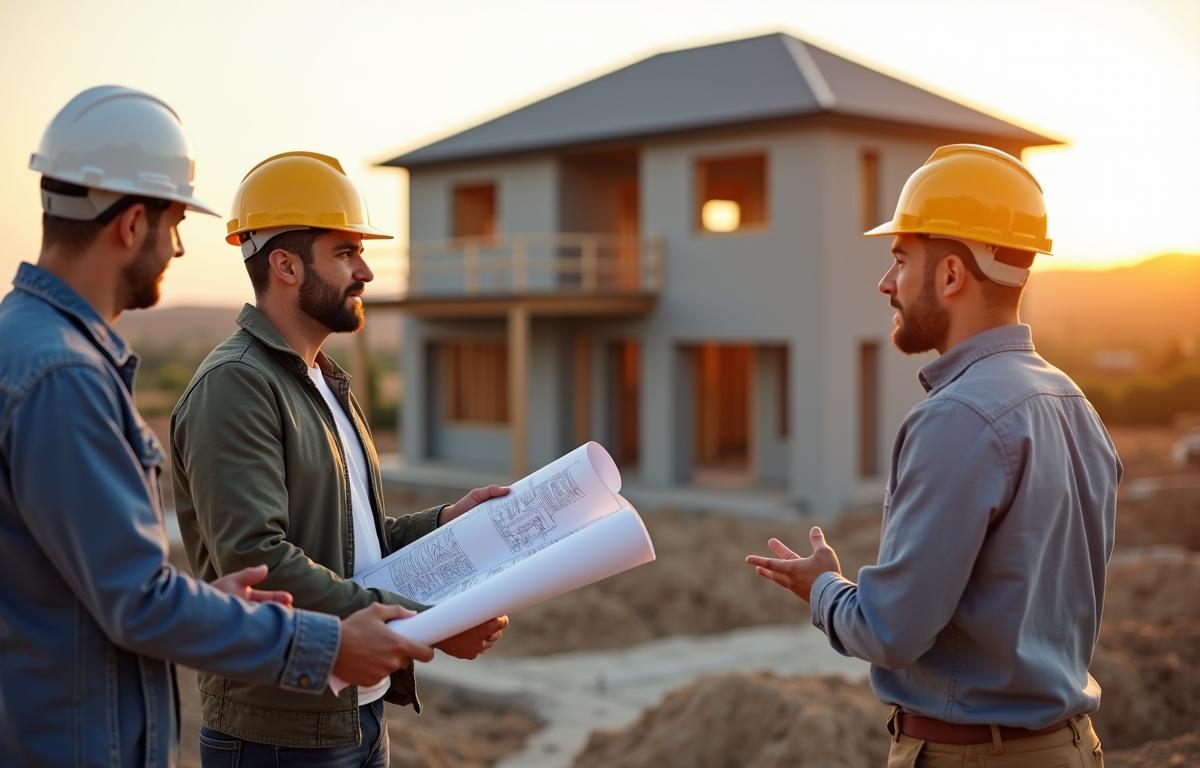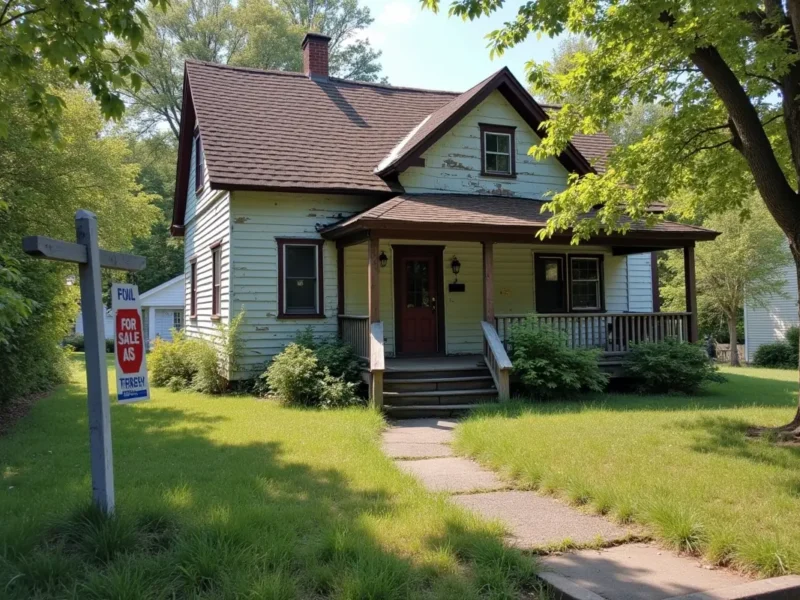Navigating the phases of crafting a new home can be both exciting and daunting. It’s a big step that frequently involves balancing your dream vision with realistic expectations. Every phase of construction demands attention to detail and consistent communication with your team. By envisioning how each step unfolds, you can stay confident that you’re moving wisely toward a place you’ll soon call home.
Whether you’re exploring architectural plans for the first time or revisiting them with your designer, it’s good to remember that patience is key. Different tasks will pop up as you go along chats with your banker, site inspections, and contractor updates. Accepting these tasks as part of your overall planning can help you feel more in control.
Contents
Key Preparations For Your New Construction Home
Early preparations revolve around researching your property, gathering estimates, and ensuring you have a solid financial plan. This initial stage can flow more smoothly if you speak with a banker or mortgage expert who has experience in financing a new build. They can help you understand budget allowances, possible interest rates, and loan programs suitable for residential construction. Even if you’ve been through a home purchase before, building from scratch often involves extra steps, like confirming the soil stability of the site or meeting local building ordinances.
Effective budgeting isn’t just about construction costs. It includes taxes, insurance, and unexpected expenses like stormwater management or architectural tweaks. A frank discussion with your builder keeps everyone on the same page, so you don’t feel surprised by potential added fees. Organizing and reviewing these details now can pave the way for a less stressful experience.
Setting Early Timelines And Expectations
Once your finances are squared away, it helps to establish a rough timeline for how you want the project to unfold. You won’t need to lock in every single date, but having a general framework keeps you aware of potential delays. Builders might suggest a schedule that accounts for weather fluctuations, ordering materials on time, and coordinating subcontractors. Following a logical sequence can minimize downtime and move the project along at a steady pace.
Designing The Perfect Floor Plan
After the budgeting stage, it’s time to meet with an architect or a design-build team to figure out the layout and feel of your new home. If you’ve envisioned a modern open concept or something more traditional, share that style profile early on. Your creative input helps translate personal tastes into specific rooms, hallways, and gathering spaces. This is also a good opportunity to talk about energy efficiency or eco-friendly design choices if that’s a priority for you.
Once you settle on a preliminary design, your team may generate a virtual or physical model to give you a better sense of the space. Walk through each room on paper and imagine your furniture arrangement or how you might want your kitchen island placed. Be vocal if something feels off tweak it now rather than regret it later. Going back and forth at this stage is perfectly normal and can save both money and time down the road.
Factoring In Individual Preferences
Your personal preferences might extend beyond the shape of walls. Think about the lighting options, stair placement, bathroom layouts, and even potential spots for built-in shelving. If you’re someone who loves cooking, highlight a spacious kitchen design. If you want a dedicated home office, incorporate that into the layout. Sometimes it’s best to keep future resale value in mind, but ensure the home remains true to the way you intend to live.
Once you’ve finalized the blueprints, the next significant step typically entails securing permits. Each locality has specific codes, so your builder might stop by the local planning office or coordinate with surveyors to ensure compliance. After getting the green light, the actual site work including clearing trees, grading the land, and marking utility lines can start. This behind-the-scenes progress might not be the most glamorous, but it’s essential for a safe and well-prepared foundation.
Foundations are poured once the site is properly leveled, and then the framing goes up like a skeleton around your eventual living space. During this phase, you’ll see dramatic changes in a short time. Walls and roof trusses give visual depth, and you start to understand how each room connects. It’s quite rewarding to witness your dream home begin taking shape.
Watching For Potential Delays
It’s common for weather events, supply shortages, or subcontractor schedules to shift timelines. The best way to handle these hiccups is open communication with your builder. Regular updates through phone calls or site visits can give you a clearer picture of any adjustments. Remain flexible, and remember that slight delays often help maintain quality, particularly if additional inspections catch minor issues before they become bigger problems.
Selecting Materials And Features
As work progresses, you’ll be invited to select finishes that align with your personal style. Fixtures, flooring, paint colors, and countertops all come into play. It’s easy to get distracted by the abundance of options available, but keeping a cohesive look in mind helps narrow the field. If you’re feeling overwhelmed, ask your design consultant or builder for guidance. They typically have experience matching various finishes and can suggest what might hold up best under daily wear and tear.
Some new construction homeowners also look to future-proof their living spaces. They might install wiring for smart devices or add structural considerations to accommodate expansions or solar panel systems later. Making these decisions now can be more cost-effective than trying to retrofit them after the walls are up. If you’re looking for more insights on material choices, consider discussing the durability and maintenance requirements of each option with your builder.
Balancing Style With Practicality
While lavish tiles or high-end fixtures can certainly elevate your home, think about your day-to-day lifestyle. Will those gorgeous marble countertops handle your family’s constant cooking? Are delicate tile floors practical if you have large pets? A gorgeous aesthetic should also satisfy functional needs. Aim for a mix of timeless design and elements that suit how you truly live and entertain.
Inspections, Walkthroughs, And Staying Informed
Inspections continue throughout the build, ensuring wiring, plumbing, and structural systems adhere to code. You might have the option to join your builder for a walkthrough, where you can see how electrical outlets are positioned or whether walls line up with your initial plan. These moments allow you to catch any detail that might have been overlooked.
Depending on local guidelines, you might have multiple inspections before drywall goes up. This is an ideal time to verify that framing is correct or that mechanical installations follow design plans. If changes are needed, making them now is usually easier and more cost-effective than later adjustments. Always keep track of progress photos, which can be helpful references if questions arise in the future.
Handling Surprises Proactively
Sometimes, hidden issues like underground rocks or potential drainage concerns only surface once construction starts. Everyone hopes for zero surprises, but a flexible outlook can prevent stress. Communicate quickly with your contractor to find a solution that fits your budget and schedule. Clear explanations from the builder about any unexpected developments will help you adjust your plan wisely.
Wrapping Up The Final Stages
Once the drywall is in place, you’ll see your home start to look more livable. Paint adds personality, and key finishes like cabinets, bathroom fixtures, and lighting get installed. After these components are in, the floors are typically completed, and the home’s ambiance quickly becomes apparent. Pay attention to your builder’s recommended schedule for visiting, as construction zones can be risky when large tasks like tiling and trimming are underway.
Final inspections are scheduled to pass every element of the build. During this stage, your presence might not always be required, but it’s prudent to stay close to your phone in case the builder, inspector, or lender needs your input. If everything checks out, you might soon see a certificate of occupancy that signals your home is ready. When contractors wrap up their final tasks and cleaning crews finish, you’re extremely close to move-in day.
Reviewing Details Before Move-In
Before the keys are in your hand, consider walking through the home with your contractor one more time. Look at the door frames, check faucets, and confirm that your power outlets function as expected. Any little detail you think might need attention should be noted and discussed. This final walkthrough helps ensure that any minor touch-ups are sorted out early, leaving you free to settle into your new space without lingering concerns.
If you’re curious about custom floor plans or interior design inspiration for your next home, you may want to check resources offered by reputable architects or local showrooms. It’s a great way to fine-tune your living space if you decide to build again or recommend the process to a friend. Each new experience makes you more confident about the decisions that create a comfortable and functional home.



